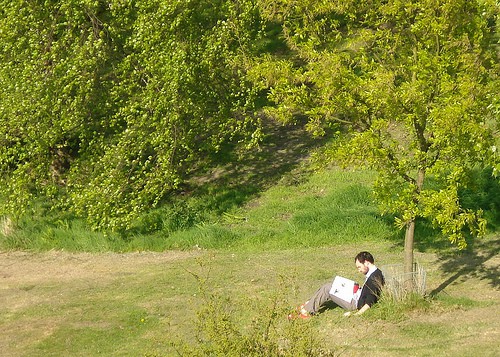Dear Students,
In an innocuous office complex, three blocks south of Northwestern University, and a short walk from Lake Michigan, you can find the Yellowbrick psychiatric treatment center. Though Yellowbrick treats the expected spectrum of mental disorders, from anxiety to schizophrenia, its mission is unique: it’s the country’s only psychiatric center dedicated exclusively to emerging adults — young people in the ever-expanding gap between adolescence and the stability of family, a mortgage, and a settled career.
Unfortunately for you, my dear student reader, business at Yellowbrick is booming.
In a recent New York Times Magazine article, journalist Robin Marantz Henig provides a haunting portrait of a typical Yellowbrick patient: he’s a young man “who had done well at a top Ivy League college until the last class of the last semester of his last year, when he finished his final paper and could not bring himself to turn it in.” This brief moment of existential despair spiraled out of control.
“The demands of imminent independence can worsen mental-health problems or create new ones for people who have managed up to that point to perform all the expected roles,” explains Henig. “[They] get lost when schooling ends and expected roles disappear.”
In other words, when you go through life thinking “if I can make it through this, things will be better later,” you eventually forget what “better” means.
This doesn’t mean that every student who sees school as a trial to survive will end up at Yellowbrick, but the despair that accompanies the perpetual postponement of an enjoyable life has a way of making its presence known. It is seen, for example, in the regular e-mails I receive from college students suffering from deep procrastination — an advanced stage of burnout where, as with the Yellowbrick patient mentioned above, completing work becomes impossible — or the quiet desperation of the overworked law associate who strains to remember why, exactly, law school had once evinced such certainty.
I didn’t write this letter to chastise. In fact, I’m dismayed by the growing number of (often Ivy League educated) voices in the student stress debate who cry out “there’s more to life than Harvard!”, but provide little guidance to what such a life should entail.
I write instead to suggest an alternative.



